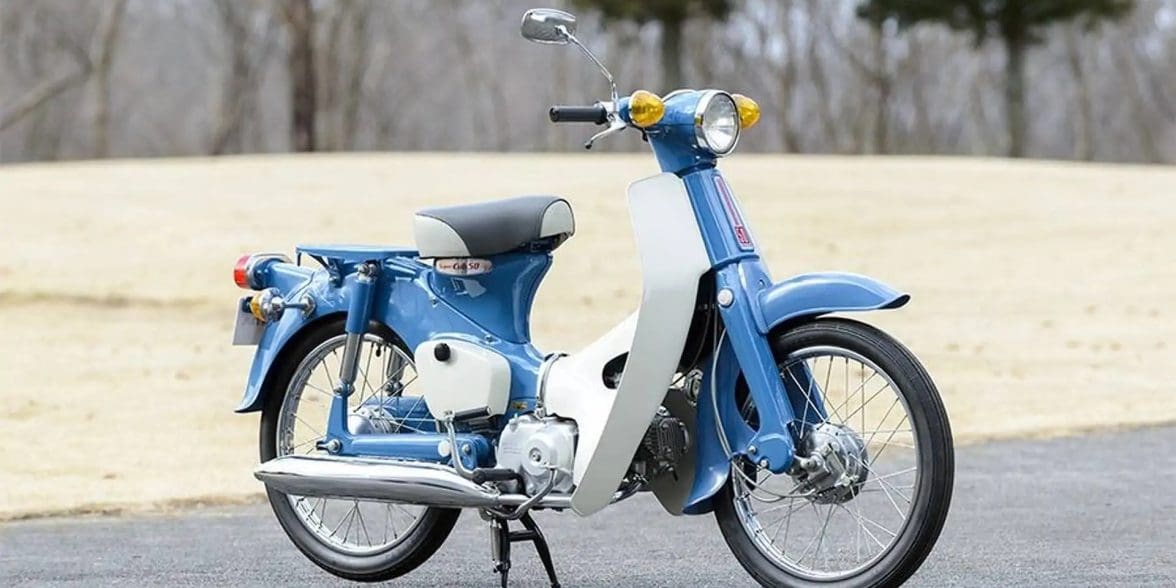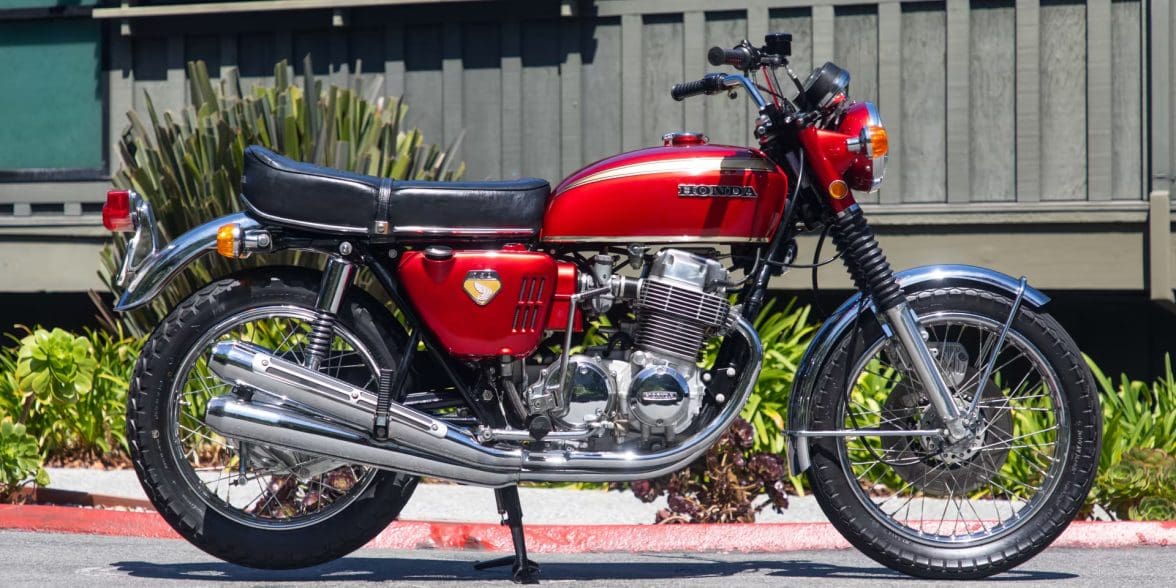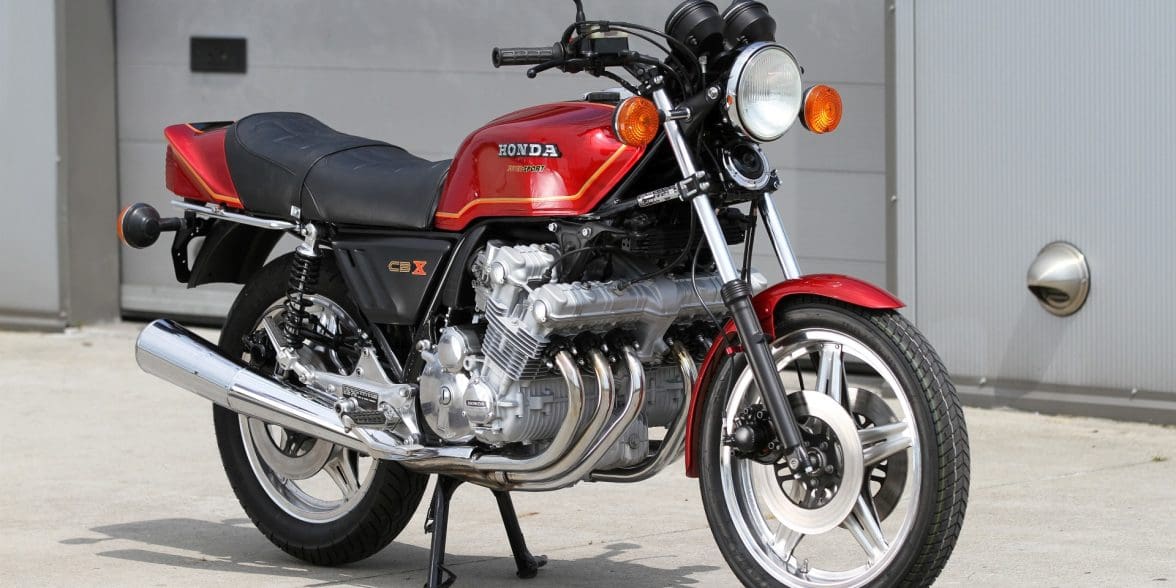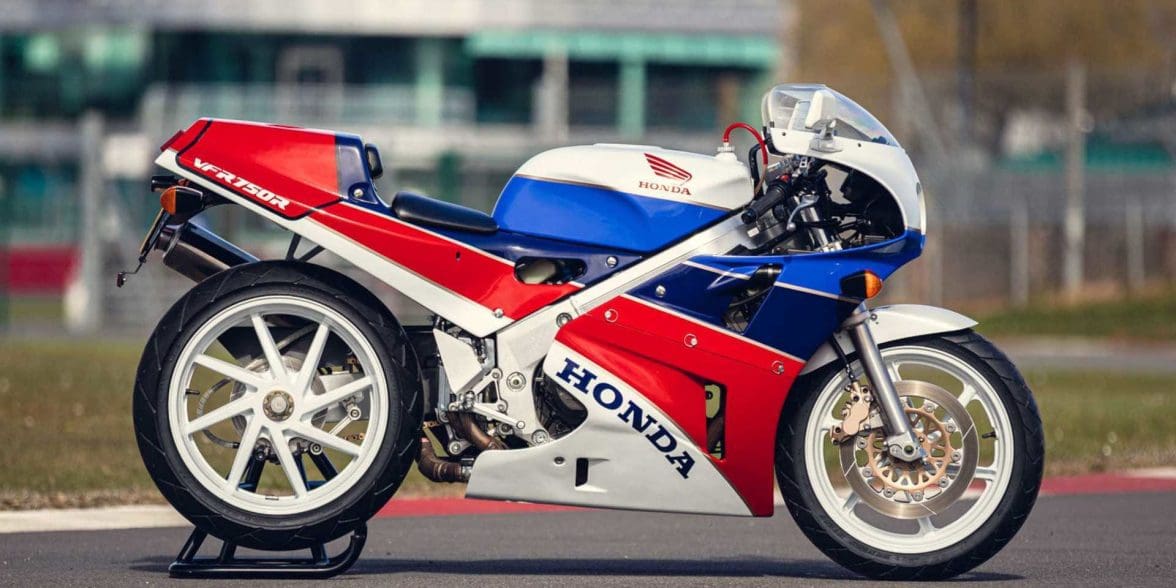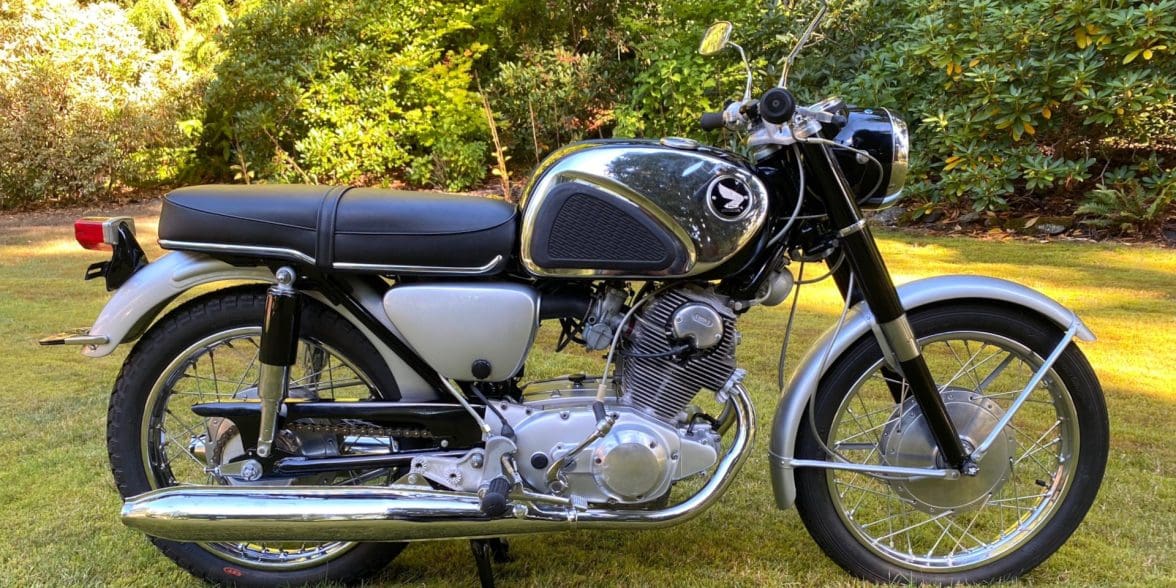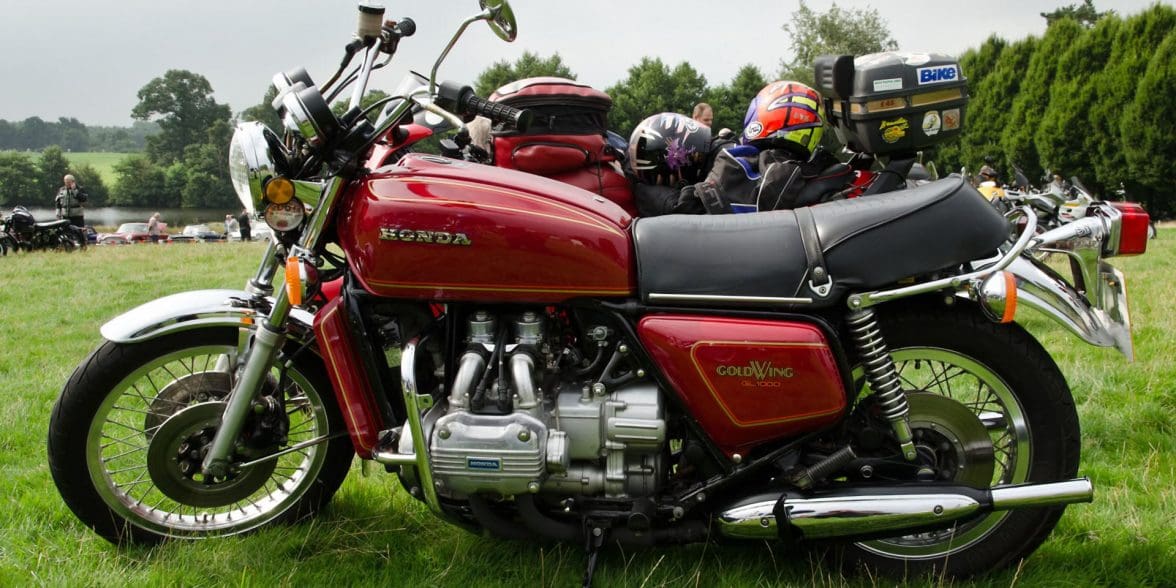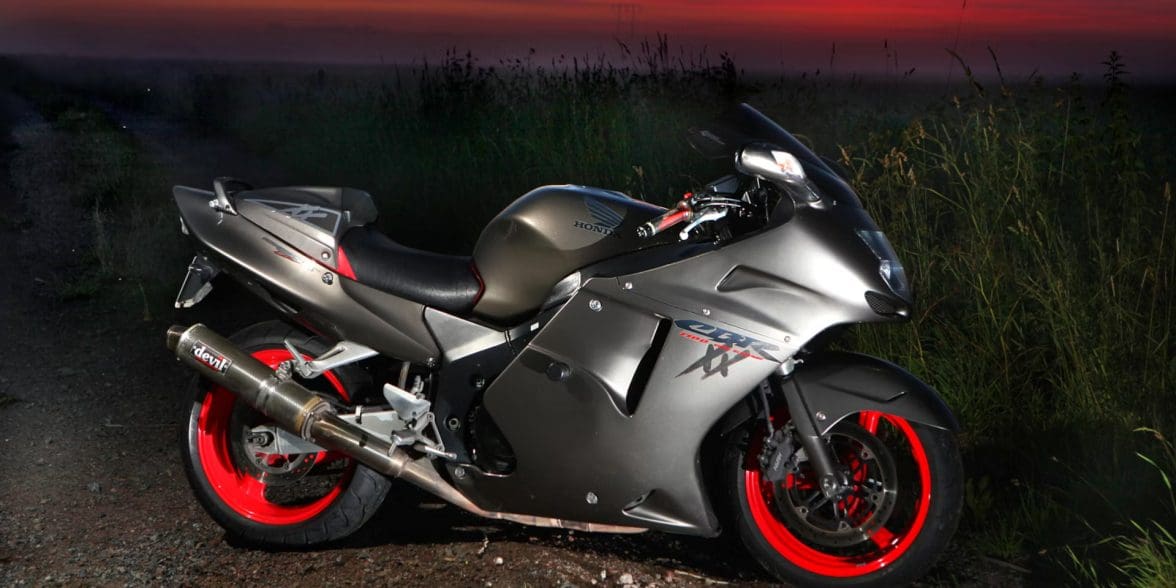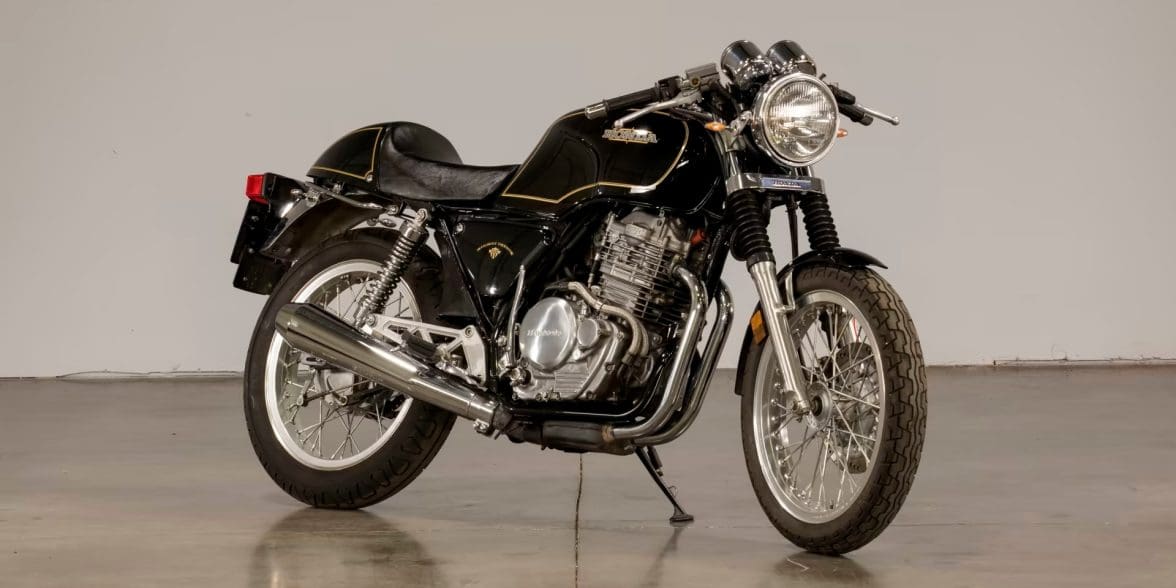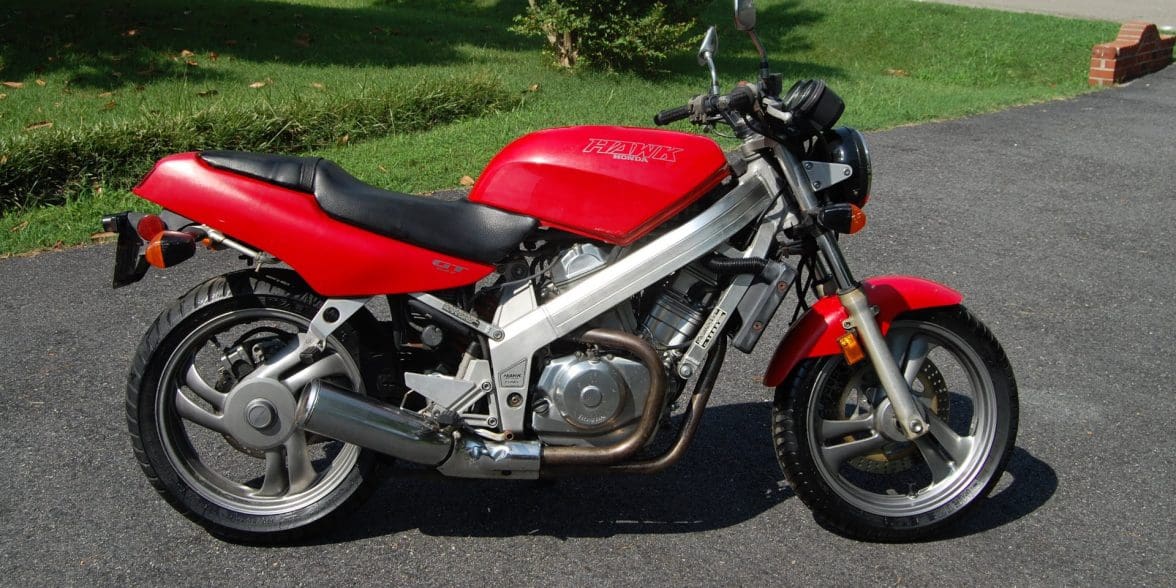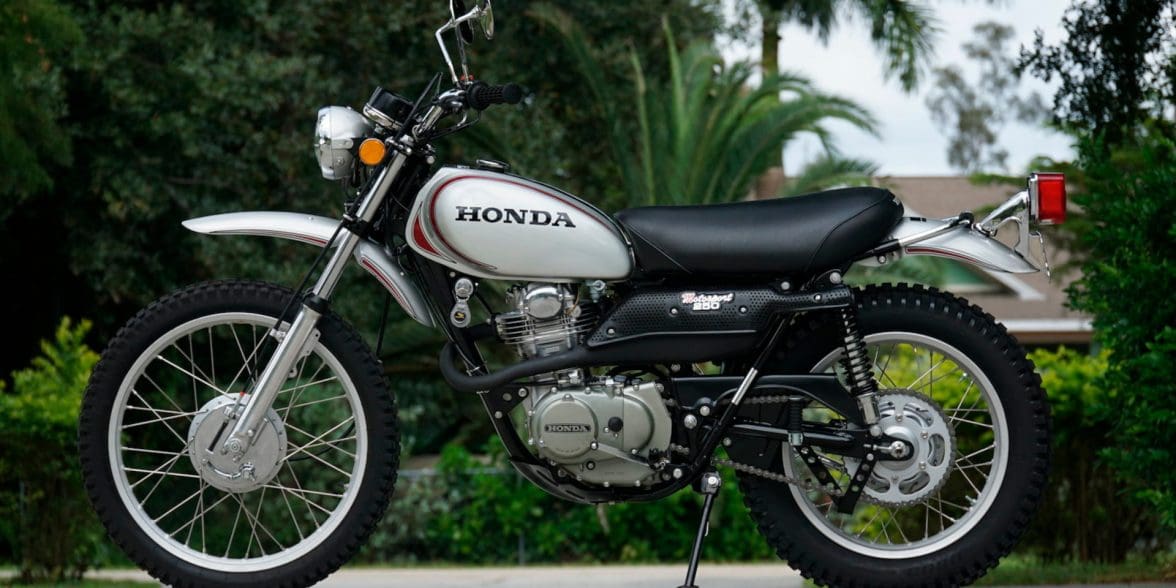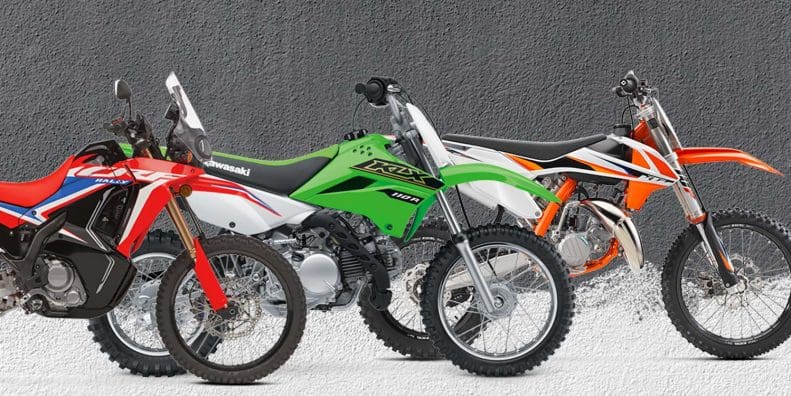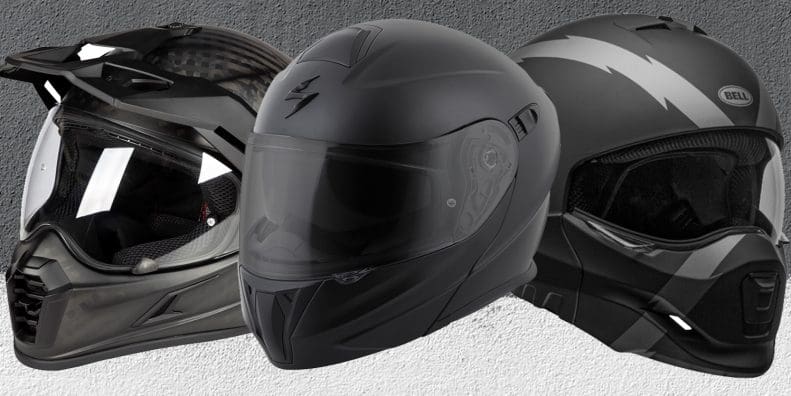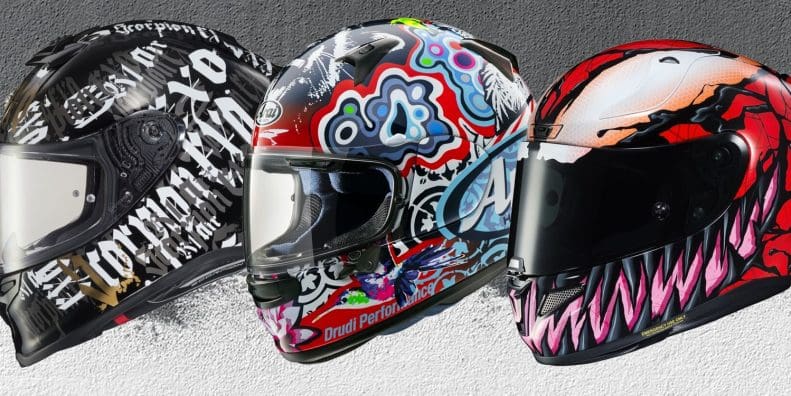10 Classic Vintage Honda Motorcycles [2024 Edition]
Updated October 4, 2023 by Simon Bertram
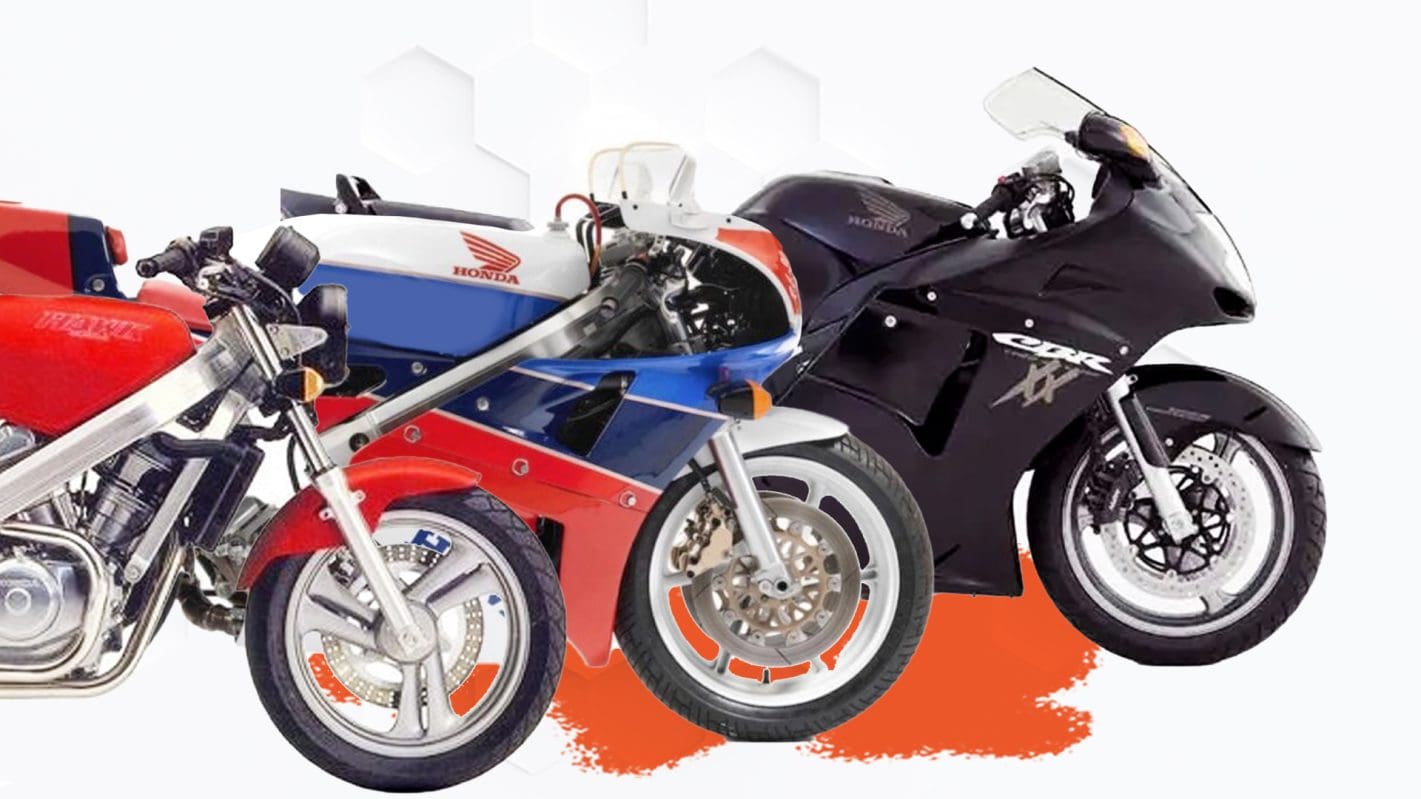
Some Of The Best From The Legendary Manufacturer
Article Quick Nav
These are some of the best Honda classic & vintage motorcycles:
If you look back over the entire history of motorcycles, Honda can safely be called a fairly young company. With the first motorized bicycles emerging at the start of the 20th century, the now legendary Japanese manufacturer didn't put out their first bike until 1958. Yet, it's what they've made during those 65 years since the Super Cub was released that has earned them a special place among the two-wheeled faithful.
There have been times when Honda seemed to be way ahead of the curve, releasing motorcycles that didn't sell well at the time, but became almost instant cult classics once that market segment picked up. It happened with their first streetfighter, as well as their first purpose built cafe racer, both arriving over a decade before the sport naked and neo-retro markets really took of, respectively. There have also been times when Honda has stuck to their guns, and kept steadfast to a formula that works, evolving instead of reinventing, such as with the best touring motorcycle the world has ever seen, the Gold Wing.
Honda even created a class or two in their time, such as the superbike, and also kicked off the power war that engulfed the second half of the 1990s. Their mark on history is indelible, with stylish, reliable bikes that proved that you could make fun bikes to ride without needing to necessarily have to fix them every two weeks. While you may not agree with our list, as it is a subjective, opinionated one, from among the hundreds of models that they have made, these are our favorite ten.
About Our Selections
These selections only had two specific criteria:
1) That the motorcycle was designed, manufactured, produced, or otherwise made by Honda
2) That the motorcycle was made in the 20th century, as 25 years is enough time to call something a classic
1958 Honda Super Cub
The motorcycle that started it all for Honda
Why We Picked It:
It is a requirement for any list that talks about the best classic models from Honda to include the Super Cub. The reasons for this are many, but the primary one above all else is that this little motorcycle is what launched, well, everything.
The importance of the Super Cub is not limited to just being Honda's first motorcycle, either. It is, quite literally, the "wheels that liberated Asia." During the 1950s and 1960s, many nations within Asia barely had roads that cars could drive on, and the distances between villages and towns was significant enough to require a full day's walk just to get there. Then, a cheap, reliable, robust, and easy to fix motorcycle arrived, and all of a sudden that same trip would take a couple of hours. The Super Cub may be just one of the reasons that Asia underwent an economic boom in the 1960s, but it is a very significant one.
It made its impact around the world. While it was the cargo hauler, distance traveler, and generic motorcycle of choice in Asia, Western markets also feel in love with the peppy little bike. It was even reflected in the marketing slogan at the time, "You meet the nicest people on a Honda," and for the most part it was true.
One of the things that helped drive sales was the centrifugal clutch semi-automatic transmission. It allowed those not too familiar with operating a bike a simpler way to simply click up and down the gears, almost like a modern quickshifter. The design has proven to be so effective that, relatively unchanged, it is still used in 2023!
Specifications (2023 Model):
Price: $3,849
Engine: 123.9cc four-stroke single
Power: 9.7 HP
Torque: 7.7 lbs-ft
Transmission: 4 Speed Semi-Automatic
Curb Weight: 238 lbs
Strengths:
The most produced and sold vehicle in motorized travel history, now at over 100 million produced as of 2017
The quintessential motorcycle: Comfortable saddle, easy controls, easy to ride, and fun
After a few hiccups in the very early years, especially with the slipping clutch issue, it quite literally became the motorcycle that opened up Asia. Cheap to run, even cheaper to fix, and durable enough to ride between towns in a hour or two, which used to be a day's walk there and a day's walk back
Learn More:
1969 Honda CB750
So good it created an entirely new class of motorcycle
Why We Picked It:
If the Super Cub was the motorcycle that started Honda's two-wheeled history, it was the 1969 CB750 that cemented it as a real contender. At a time when only race bikes or modified standard bikes were considered "sporty," this one bike was like a sledgehammer to the face of the entire market.
Powered by a 736cc inline four, it boasted an at-the-time incredible 68 crank HP, and 44 lbs-ft of torque. You also need to keep in mind that at the time, a 500cc motorcycle was considered extremely powerful, in the same way a liter bike is today. Only some of the British roadsters from Triumph, Royal Enfield, Norton, and the like were able to compete with it, and they were extremely expensive and low-volume motorcycles.
In effect, what the Honda CB750 did was take what was considered unobtainable power, bring it to the market, and in doing so, created an entirely new class of motorcycle. Many bikes by this time had used names such as "Super Sport" or "Sport," but without needing a badge, the CB750 was the world's first true superbike.
Racing level power, stiff, taut frame, the best brakes available at the time, and a top speed of a hair under 125 MPH. It was also eminently affordable, at $1,495 in 1969, a full $400 to $700 less than its British rivals that it outperformed in almost every way. If you are a superbike rider, this is the genesis of everything that followed in that class!
Specifications:
Price: $1,495 in 1969 ($12,506 in 2023)
Engine: 736cc inline four
Power: 68 HP
Torque: 44 lbs-ft
Transmission: 5 Speed Manual
Curb Weight: 513 lbs
Strengths:
The bike that created the superbike class, where the most powerful sport bikes reside today
In a rare reverse transfer of development, it was the CB750 that lent its power and engine to the CR750 race bike
Was ridiculously fast for its day, capable of 125 MPH... in 1969
Despite disappearing from North American markets in the mid-80s, was still sold elsewhere all the way up to 2001
Learn More:
1978 Honda CBX (A.K.A. CBX1000)
One of the, if not the best sounding motorcycles of all time, and an engineering marvel on top of that
Why We Picked It:
The CBX, or as it's called in some jurisdictions the CBX1000, it was the culmination of a roomful of engineers and designers pondering "What if..." What if they put a huge, 1,047cc inline six engine into a super sport frame? What if they moved the seat back and down? What if they barely put any baffles in the exhaust so that that engine could sing its way up into the stratospheric RPMs?
Well, as a result of all those what ifs, Honda made a motorcycle that boasted a huge 105 HP and 53 lbs-ft of torque, and would go like it had been launched off of a catapult. It was insanely fast, capable of over 130 MPH, but at the same time it was extremely rideable.
This is where the marvel of engineering comes about in the CBX. Despite it being one of the most powerful bikes of the 1970s, it had a heavy clutch with superb feel, and power came on in a linear, if somewhat rapid, fashion. Despite looking a little heavy with that ginormous engine, it was also extremely eager to corner. It also introduced an evolution of the standard riding style, which eventually came to be known as the "Sport Standard" position that sport tourers today use.
Very few bikes before or since have ever balanced sheer, outright, unbelievable power and speed with the performance, eagerness to lean, and road feel of the CBX. That is why it is one of the best examples of a classic Honda.
Specifications:
Price: Unknown
Engine: 1,047cc four-strike inline six
Power: 105 HP
Torque: 63 lbs-ft
Transmission: 5 Speed Manual
Curb Weight: 600 lbs
Strengths:
Quite possibly the best sounding motorcycle ever made. Just listen to it.
Helped start the supersport craze that swept around the globe in the 1980s
Was one of the first sportbikes that implemented a version of the sport-standard position that is now the hallmark of sport touring motorcycles such as the current Honda CBR650R
An engineering marvel that resulted from giving a room of designers and engineers the freedom to ask "What if...?"
Learn More:
1987 Honda VFR750R
Honda's first true homologation special, and what a special!
Why We Picked It:
To us, at least, the 1987 Honda VFR750R is one of the best looking sportbikes ever made. Due to the rules of the brand new World SuperBike Championship, road-going homologation bikes needed to be made so that race bikes could be entered into competition. The race bike here was the venerable RC30, and the road bike was this gorgeous beast of a bike.
One of the very few road-going V4's that Honda has released, the 748cc heart of the bike produced a meaty 118 HP and 51 lbs-ft of torque. Limited to just 3,000 examples, they were built at the same assembly facility that the race bikes were, as they were quite literally RC30's with mirrors, headlights, tail lights, and a license plate holder. Oh, and they detuned the VFR750R's V4 to 118 HP, so you know that the RC30 was something special.
That proved to be true, as the RC30 won the inaugural season of World SBK in 1988, and then defended its title successfully in 1989. While the race bike could hit 12,500 RPM, the VFR750R was limited to "only" 11,000 RPM, at a time when high revving V-style engines were expensive and rare. That was reflected in the astronomical price of $15,000 for the bike in 1987. That's over $40k today!
Specifications:
Price: $15,000 in 1987 ($40,365 in 2023 USD)
Engine: 748cc V4
Power: 118 HP (Restricted to 76 HP in Japan)
Torque: 51 lbs-ft
Transmission: 6 Speed Manual
Curb Weight: 488 lbs
Strengths:
A limited series homologation special of just 3,000 units that were both very expensive and you had to be invited by Honda to buy one
Superb pedigree, as the RC30 racing version won the first two seasons of the World SBK Championship
One of the extremely rare V4's that Honda has ever made available for a road bike, preferring to use parallel twins and inline fours for the majority of the time
Learn More:
1965 Honda CB77 Super Hawk
Honda's answer to the flood of British roadsters and sport bikes in the 1960s
Why We Picked It:
The CB77 Super Hawk is one of those bikes that realistically shouldn't have had a hope in hell of succeeding, and then went on to over-achieve that success. The Brits were pushing out roadsters and sport bikes left, right, and center, mostly due to those bikes being converted to cafe racers or being used for the many TT races around the UK and Europe at the time.
Almost all of those bikes used the relatively new parallel twin engine, and Honda paid careful attention to how the Brits made their bikes, especially the vibration inducing 360 degree crank on most of them. Honda then made their own parallel twin, except they gave it a 180 degree crank, and also made it a stressed member of the bike's frame.
This is arguably Honda's first real sports bike, and despite it having a tiny 305cc parallel twin, it was smoother, more reliable, and shockingly faster than many of the larger displacement British beasts. It also came with many amenities that we take for granted today, but were revolutionary back then, such as an electric starter, a redline of 9,000 RPM, and a top speed that inched over 100 MPH.
The CB77 Super Hawk was such as revolution that it defined many of the things that every sport bike after its introduction needed to have, and even today, is widely regarded as a landmark bike that changed history.
Specifications:
Price: Unknown
Engine: 305cc parallel twin
Power: 28 HP
Torque: 17 lbs-ft
Transmission: 4 Speed Manual
Curb Weight: 351 lbs
Strengths:
Had a smaller engine than most, if not all, of the British roadster and sport bikes of the time, but due to how it was produced and was as stressed member of the bike, the CB77 was faster
Defined many of the things that a sport bike needed to have to be competitive in the market, even to this day, such as a frame that promotes agility, an engine that is powerful for its size, and superb reliability
Learn More:
1974 Honda Gold Wing
The motorcycle that revolutionized the touring market segment
Why We Picked It:
Before 1974, a touring motorcycle was something that came from either Harley-Davidson or Indian Motorcycles, and was a big, heavy cruiser that could spend days, if not weeks, on the road. So, imagine the reaction when in 1974, this little Japanese manufacturer, still getting its foot solidly planted into Europe and North America, brings out a touring monster with a gigantic 999cc flat four engine that can keep up with, and then ride circles around, those touring cruisers.
1974 was a year when motorcycling changed forever, with the Gold Wing being the catalyst. Using all of the experience making smaller sport motorcycles, Honda made a superb full-duplex steel frame, mounted a boxer four engine at the very bottom of the bike, and attached it via a 5-speed transmission to a shaft rear drive. That first model was known as the GL1000, and had 80 HP propelling a bike weighing a hefty 584 lbs.
What it was, however, was a touring motorcycle that simply ate up the miles on the interstates and highways, while also being unbelievably reliable and, to a certain extent, agile and sporty in handling and feel. It was a heavy bike, but it wasn't a lumbering V-twin cruiser, and that alone was enough to bring a lot more riders into the touring fold that may have never considered it before.
Nowadays, almost 50 years on, and 40 years on from the 3rd generation Gold Wing of 1985 that created the silhouette we all know and love today, it is still considered the absolute, undeniable King of Touring Motorcycles.
Specifications (1st Gen):
Price: Uknown
Engine: 999cc boxer four
Power: 80 HP
Torque: 61.2 lbs-ft
Transmission: 5 Speed Manual
Curb Weight: 584 lbs
Strengths:
Was such a revolution to touring motorcycles that the first generation alone (1974 to 1979) sold 97,000 units in North America alone
The 2nd generation (1980 to 1984) improved the motorcycle and added a few more touring oriented items as standard, while also starting to offer trims with hardpoint attached luggage
The 3rd generation was when the now famous silhouette of a Gold Wing, that of the angular front, raked windshield, hardpoint attached luggage, and dipped rider seat with raised passenger seat, was established.
The King of Tourers, flat out, hands down, no question
Learn More:
1996 Honda CBR1100XX Super Blackbird
The bike that helped start the power wars that consumed the latter half of the 1990s
Why We Picked It:
By the mid-1990s, Kawasaki had a firm grasp on the title of fastest production motorcycle with the Ninja ZX11. It was all over their marketing, they were using it for great publicity, and that rubbed Honda just a little. As such, Honda decided to wipe the smile off the face of Kawasaki, and the CBR1100XX Super Blackbird was the bike to do it with.
Now, keep in mind that in the mid-1990s, a motorcycle with 130 to 140 HP was a very rapid machine. For inspiration, Honda turned to the SR-71 Blackbird, hence the naming of the bike as the Super Blackbird, and as it was grossly overpowered until it reached it's cruising speed, the CBR1100XX arrived with a massive 165 HP from a 1,137cc inline four.
The bike achieved the target of being the fastest production motorcycle, able to reach and sustain 170 MPH, with independent testing able to reach 178.5 MPH average over two runs. However, waiting quietly in the wings, Suzuki had been jotting down notes, and what Honda had unknowingly done was start the infamous power wars that consumed the sportbike market for the latter half of the 1990s, culminating in the Hayabusa claiming the top spot in 1999.
Specifications:
Price: $11,499 in 1996 ($22,500 in 2023)
Engine: 1,137cc inline four
Power: 165 HP
Torque: 93 lbs-ft
Transmission: 6 Speed Manual
Curb Weight: 556 lbs
Strengths:
Briefly held the title of world's fastest production motorcycle from 1996 to 1998
Launched the power wars that affected every displacement of sport bike between 1996 and 2001
At the time had one of the largest inline four engines ever made, although that was quickly overshadowed by the Suzuki Hayabusa's 1,299cc power unit
Learn More:
1989 Honda GB500 TT
A design and engineering experiment to see what Honda would do if they were British
Why We Picked It:
Most of the time, a manufacturer will go with the safe bet, with a proven motorcycle that they know will sell well. There are endless consumer reports, market studies, polls, and tests to determine what riders want at any given time, and the motorcycles of the time reflect that. However, sometimes a manufacturer will go way out into left field and release a motorcycle that is more an experiment than anything, just to see what their interpretation of something is.
One of those experiments was the cult favorite GB500 TT, with the GB standing for Great Britain and the TT for Tourist Trophy. It was Honda's go at creating a classic British 500cc single cylinder roadster. It had the 498cc engine from an XR500 dirt bike, producing 38 HP and 26.4 lbs-ft of torque, pushing a bike that weighed about 370 lbs when fully wet.
It didn't sell well, as the customers at the time weren't too keep on the cafe racer styling, unlike the market today with the neo-retro style of motorcycle. It was, however, a bike that garnered a small but earnest following, and, in classic Honda style, came around about a decade too early, foreshadowing the explosion of the neo-retro and standard style boom that started around 2005 and hasn't slowed down since.
Specifications:
Price: $4.195 in 1989 ($10,386 in 2023)
Engine: 498cc four-stroke single
Power: 38 HP
Torque: 26.4 lbs-ft
Transmission: 5 Speed Manual
Curb Weight: 370 lbs
Strengths:
A design and engineering experiment that no-one saw coming, but unfortunately also one that seemingly had no-one was interested in buying
Arrived about a decade too early to capitalize on the romanticized idea of a classic motorcycle with modern technology
Nowadays is a cult classic and highly desired collector's bike, and commands premium prices on the used market if in good condition
Learn More:
1988 Honda NT650 Hawk GT
A streetfighter motorcycle way ahead of its time
Why We Picked It:
The NT650 Hawk GT is a rare motorcycle in the fact that for once, Honda looked at what North American customers wanted, instead of Asian or European customers. As supersports were becoming a very popular style of motorcycle, many riders were tracking theirs, and if they wiped out, they simply ripped their damaged fairings off and kept riding, giving birth to both sport nakeds and, for the more powerful bikes that it happened to, streetfighters.
The NT650 was one of the world's first purpose built streetfighters, although it came about a few years too early, in typical Honda fashion. Imagine seeing a 647cc V-twin streetfighter with a twin-spar aluminum frame, rare single sided swingarm, and gave it handling on par with a championship superbike. You see, that's exactly what the NT650 is.
It was made from 1988 to 1990 only, ceasing production just a few months before the streetfighter craze arose with the 1991 Ducati Monster. It was a Suzuki SV650 a full decade before that bike was developed and released. It had a meaty 60 HP, 31 lbs-ft of torque, 5 speeds in the transmission, and could hit 110 MPH easily. It was nimble, it was quick, but it was also a few years too early.
Today, it is a highly sought after collector's bike as it is one of Honda's rarest bikes, that of a V-twin engine combined with a single sided swingarm.
Specifications:
Price: $3,998 in 1988 ($10,376 in 2023)
Engine: 647cc V-twin
Power: 60 HP
Torque: 31 lbs-ft
Transmission: 5 Speed Manual
Curb Weight: 412 lbs
Strengths:
Along with the Yamaha SRX, was one of the first purpose built and produced streetfighters, before the class even existed.
Has the rarest combination of features in a Honda, that of a V-twin paired with a single sided swingarm
Sold poorly as it was ahead of its time
Is now considered a collector's bike, and for some, even a "unicorn" bike to be the centerpiece of their collection if they can find one in mint condition
Learn More:
1972 Honda XL250
An absolute gem of a dual-sport from the golden age of the enduro
Why We Picked It:
The 1972 XL250 is one of those bikes that planted a Honda flag in the ground and stood by it all the way up to 1987. It was the first mass produced four-valve motorcycle, and was one of the first "modern" four-stroke dual-sports. It also established the look of Honda's more off-road oriented motorcycles for the next 50 years, still reflected today in bikes such as the CRF300L and the XR650.
With a very potent 250cc single, producing 24 HP and 16.9 lbs-ft of torque, it landed squarely in the middle of the golden age of enduro motorcycles, when dirt bikes as a whole, as well as dual-sports were a brand new concept and every manufacturer and their subsidiary was making one. From that gigantic pile of choices, the XL250 rose to the top.
It was a gem of a bike on paved roads, being ultra-light at 288 lbs wet, and was as agile as a flea, cornering as if through telepathy. It was also capable of getting off the pavement and onto the dirt, allowing for exploration beyond what many road-going riders knew of at the time. The only downside to the XL250 is that it ended production in 1987, to be replaced by the CR series of bikes, which didn't have quite the same feel and panache of this diamond in the rough, and even today, you can find XL250's still thumping away happily down a road nearby.
Specifications:
Price: $896 in 1972 ($6,581 in 2023)
Engine: 250cc four-stroke single
Power: 24 HP
Torque: 46 lbs-ft
Transmission: 5 Speed Manual
Curb Weight: 288 lbs
Strengths:
One of the best 20th century dual-sport motorcycles ever made
Immensely popular, sold in the range of tens of thousands during its initial sales years of 1972 and 1973
Was the first mass produced four valve, four stroke single in the world
Defined the basic shape of Honda's dual-sport bikes, even today


